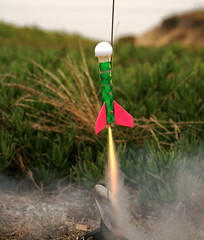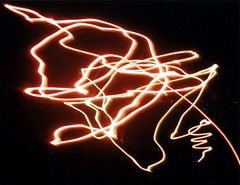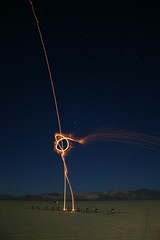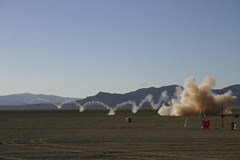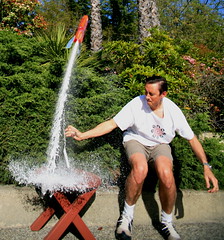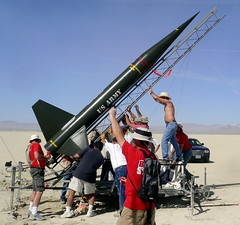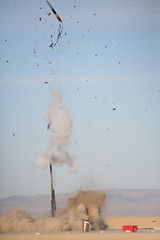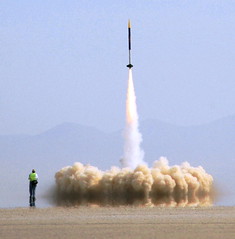One year ago, folks were reading this on GeekDad:
Rocket Science Redux
You may remember Estes rockets as a kid. 300 million of them have launched so far.
Somehow, when I was growing up, I never launched a rocket vertically. But now, I am giving it a more serious pass, and trying to recover each rocket for another day.
Let’s start small. Trying to build the smallest possible rocket is a great way for children to learn rocket science.
Kids start with the assumption that a bare Estes rocket engine should go a long way, but it skips randomly through space bouncing all around you. Next thought: it needs fins and a nosecone. So, we add a nose cone and some fins to a motor, and it is still totally unstable (but now with a sharp point on it!).
You need a proper balance of weight and thrust vectors. A long rocket tube shifts the center of gravity forward, like a lever arm or see-saw. With a short rocket, you need a lot of nose weight to shift the balance point forward. So the shorter the rocket tube, the heavier the nose needs to be. A young boy had the clever idea to tape a stray golf ball onto the nose of his 6″ rocket made from the remains of others… and it flies perfectly straight every time. It also launches the golf ball at apogee instead of popping a chute…. So he can take on Big Bertha with his little rocket driver…
It’s Rocket Science redux! CP < CG
To be stable, the rocket’s CP (Center of Pressure) should be one or two body diameters behind the CG (Center of Gravity). The fins are there to streamline the flow of air and provide a large surface area to help to keep the center of pressure below the center of mass of the rocket.
The CG is easy to measure balancing the rocket horizontally on your finger. The CP can be visualized by imagining the 2D horizontal projection, or shadow, of the rocket on paper, and then finding the center of gravity of that paper shadow cut-out. So big fins, swept back, helps push the CP back to the rear. You can think of it as the cross-sectional area midpoint being back behind the fully-loaded weight midpoint. If you achieve this, then side gusts of wind and random perturbations are self-correcting instead of self-amplifying.
Realize that the motor is a big part of the rocket weight. Some people have a rocket that is barely stable, and they naturally push the limits with a heavy motor. At takeoff, the rocket is unstable and creates a pinwheel in the sky. But when enough of the fuel weight has burned off, the rocket flies straight as an arrow again… but now pointing in a random direction. This is particularly common in multi-stage rocket modifications with strap-on Estes booster motors at the bottom. There is nothing quite like a rocket coming back at you under full thrust. =)
For a good set of diagrams and description of dynamic instability, check out
this page.
At high power launches, random dances,
are just big versions of the same stability experiments gone terribly wrong.
It’s great to rediscover a hobby that scales…. Fun for the kids, and the Geek Dads.
to the big stuff in the Desert
Enjoy! The next step for us was on-board video cameras, a topic for a future post. In the meantime, here is my collection of rocket photos.
